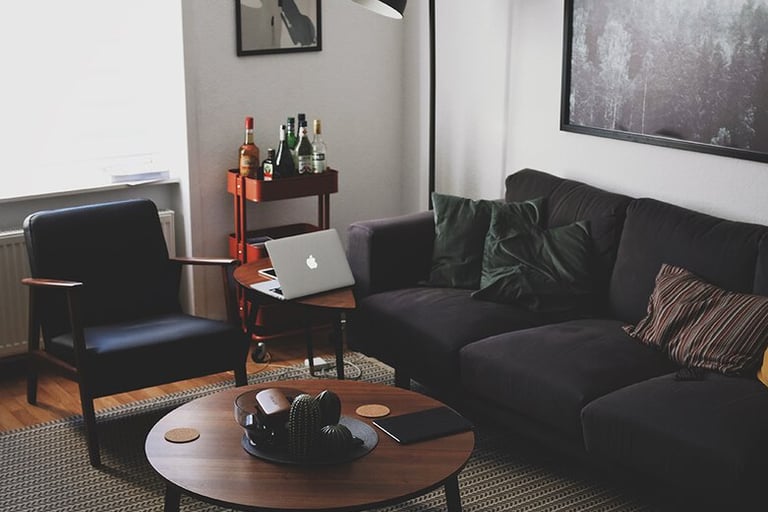7 Tips Photographers Want You to Know for Taking Eye-Catching Photos When Selling Your Home
9/12/20255 min read


Understanding the Importance of Quality Photography
In today's competitive real estate market, the role of high-quality photography cannot be overstated. When selling a home, the visual appeal of property listings is paramount to attracting potential buyers. Professional photographs serve as the first impression buyers have of a home, often shaping their perception before they even step foot into the property. In fact, listings that feature high-resolution images are known to generate significantly more interest, as they convey a sense of professionalism and care that resonates with potential buyers.
The psychological impact of images is profound; according to the National Association of Realtors, homes with professional-quality photographs sell 32% faster than their counterparts. This statistic underscores the critical role that visuals play in drawing buyers in and enticing them to learn more. Quality images not only showcase the property’s best features but also evoke emotions that inspire buyers to envision their future in the space. Buyers are more likely to engage with listings that are visually compelling, making photography an essential aspect of any home-selling strategy.
Furthermore, case studies support the idea that exceptional photography can lead to higher offers. For example, a recent study indicated that homes marketed with professional photos often command sale prices that are 20% more than homes presented with amateur images. This demonstrates that investing in quality photography can yield substantial returns, transforming potential sale prices and decreasing the time a property languishes on the market.
In essence, for homeowners aiming to sell their property effectively, enhancing listings with professional photography is a strategic move that can lead to a more successful sale process. Quality images not only highlight a property’s strengths but also connect with buyers on a deeper emotional level, driving quicker transactions and potentially increased offers.
Declutter and Stage Effectively
When preparing your home for photography, decluttering and effective staging are critical components that significantly impact the final images. A clean and open environment allows potential buyers to appreciate the space and visualize themselves living there. To begin, it is essential to remove any personal belongings, excess furniture, and clutter that may distract from the home’s features. This process often involves sorting items into categories such as keep, donate, or discard, ensuring that only necessary and appealing items remain.
Staging involves arranging furniture in a way that showcases the functionality and flow of each room. Consider using neutral colors for decor and furnishings, as these tones appeal to a wider audience and create a serene atmosphere. A well-staged room should highlight the home’s best features, such as large windows or architectural details, allowing these elements to stand out. For instance, positioning furniture away from windows can enhance natural light, making the space feel airier and more inviting.
Common staging mistakes include overcrowding spaces and failing to take proportions into account. To prevent this, assess the scale of your furniture relative to the room size and remove any oversized pieces that may overwhelm the space. Additionally, try to create focal points in each room that draw attention without cluttering the overall look. Simple additions, such as fresh flowers, strategically placed artwork, or small decorative items, can enhance the visual appeal without taking away from the home’s characteristics.
In summary, effective decluttering and staging are essential for taking eye-catching photographs when selling your home. By carefully considering the arrangement of your space and the items you display, you can greatly affect how your property is perceived by potential buyers through the lens of a camera.
Choose the Right Time of Day for Natural Light
Lighting plays a crucial role in photography, significantly affecting the mood and appeal of images, particularly in real estate photography. The right timing can enhance the aesthetic qualities of your home, making it more inviting to potential buyers. Natural light is typically best captured during specific times of the day, notably the 'golden hour,' which occurs shortly after sunrise and before sunset. During this period, the sun is low in the sky, creating a soft, warm glow that reduces harsh contrasts and enhances the architecture’s features.
Aside from the golden hour, midday can present challenges due to the harsh overhead sunlight, resulting in stark shadows that can detract from your home's charm. However, with the right techniques, these mid-morning or mid-afternoon photographs can still be appealing. It is advisable to use the advantages of shade during these times, such as photographing under trees or awnings to diffuse the light. This technique diminishes shadows and provides even illumination, allowing the home’s interior features to shine without glare.
In scenarios where natural light is inadequate, artificial lighting can be employed to enhance the overall brightness of the photos. Simple adjustments, such as turning on interior lights or utilizing external sources, can effectively brighten darker areas, bringing harmony and warmth to the images. Additionally, consider the direction of the light; avoid shooting at angles that create harsh shadows and instead aim for perspectives that capture the light flooding into rooms.
Ultimately, understanding how to utilize natural and artificial light will not only improve your photography skills but also significantly boost the visual appeal of your home. By recognizing the optimal times for taking photos and being mindful of lighting conditions, you will enhance the overall quality of imagery that is essential for attracting potential buyers.
Utilize Angles and Composition Techniques
When photographing a home, angles and composition techniques are pivotal in creating eye-catching images that attract potential buyers. Proper framing of shots can highlight the spaciousness and unique features of each room. Utilize wide-angle lenses to capture more of the environment in a single shot, which is especially beneficial when working with smaller spaces. This technique allows potential buyers to experience a room's layout and flow, crucial aspects of home viewing.
Additionally, consider employing symmetry in your photographs to create visually balanced images. Symmetry can guide the viewer’s eye and evoke a sense of harmony within your photographs. When photographing a hallway or staircase, centering the shot and ensuring both sides mirror each other can lead to striking imagery that resonates with buyers. Moreover, leading lines, such as a pathway or a row of chairs, can draw attention to focal points in the home and encourage viewers to explore the image further.
The rule of thirds is another essential compositional technique that can significantly enhance your home photography. Imagine your frame divided into three equal parts both horizontally and vertically, and position the key elements of your shot along these lines or at their intersections. This approach creates a more dynamic composition and encourages the viewer’s eye to wander across the image. Small adjustments, such as shifting your angle or repositioning objects within the frame, can transform an ordinary photograph into a captivating visual narrative that emphasizes the property’s best attributes.
Incorporating these angles and composition techniques will not only enhance the aesthetic quality of your photographs but also increase the perceived value of the home being showcased. A thoughtful approach to composition can effectively communicate the essence of each room, ultimately making a lasting impression on potential buyers.
Agent Terry
Your trusted partner in Luxury homes and Military relocation real estate.
CONTACT
terry@thesaltandlightrealty.com
671-689-7726 Local and WhatsApp
terry@thesaltandlightrealty.com
414-301-1277 Stateside
© 2025. All rights reserved.


